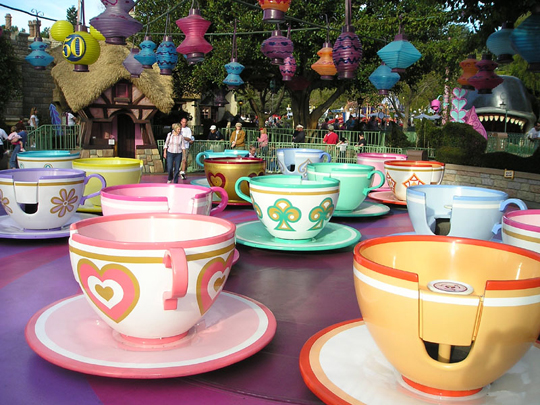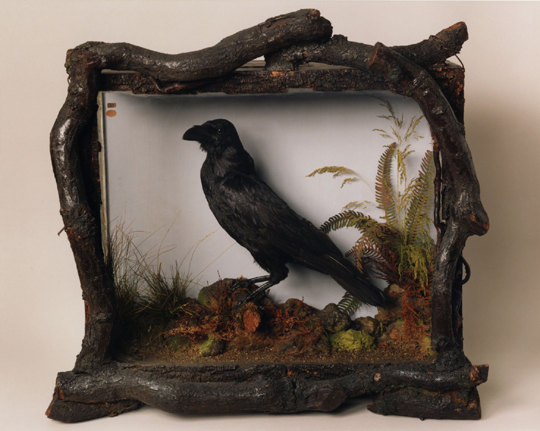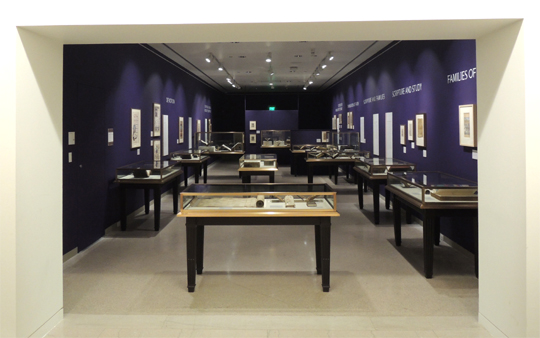
It’s time to deck the halls, and this historical house pulled out all the stops, compliments of the talented individuals in the West Trenton Garden Club! In today’s post, we’re visiting the holiday display inside the library at Drumthwacket, the official residence of the Governor of New Jersey. This year, the theme was children’s literature, and the exhibit featured ten different tables with innovative and gorgeous takes on holiday classics! Katie’s been a docent at Drumthwacket for over a decade, and she is going to do her docent duty and drop in cool little facts as we meander through this delightful tour. Her parts will be in italics!
The library was added to Drumthwacket by the second private owner, Moses Taylor Pyne. Pyne graduated from Princeton in 1877 and never missed a meeting during his 37 year tenure on the University Board of Trustees.
Here’s another glimpse at the arrangement that started this post – a table for Jan Brett’s fantastic books, including The Mitten and The Hat. Did you notice the little pine cone owl in the mitten? Adorable.

Another cozy classic is Nutcracker, written by E.T.A. Hoffman, and illustrated by Maurice Sendak (and here’s a little Sendak special collections gem for you to enjoy as well).
 Nearby was a Nutcracker-inspired tree festooned with sweet little ballet ornaments:
Nearby was a Nutcracker-inspired tree festooned with sweet little ballet ornaments:
 At the next display, the West Trenton Garden Club stole my heart with this innovative white carnation snowman, aptly paired with Raymond Brigg’s classic The Snowman. Look that snowman’s little baby carrot nose. Perfection!
At the next display, the West Trenton Garden Club stole my heart with this innovative white carnation snowman, aptly paired with Raymond Brigg’s classic The Snowman. Look that snowman’s little baby carrot nose. Perfection!
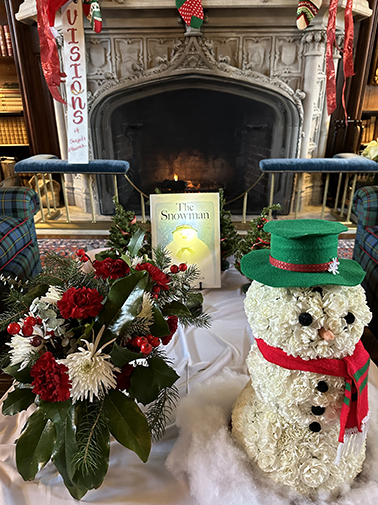
The fireplace is one large block of Caen stone from France, which was brought to Drumthwacket and carved onsite by stonemasons. Can you see the Princeton University shield hidden in the middle of the fireplace?
Up next we have none other than Charlie Brown and his little tree that could…
 And a Mexican holiday legend retold and illustrated by Tomie dePaola. If you’re a fan of dePaola’s work, don’t miss this original Strega Nona gingerbread cottage. Its massively talented architect, Jen Carson, would return to our blog eleven years later with her own bakery and children’s book!
And a Mexican holiday legend retold and illustrated by Tomie dePaola. If you’re a fan of dePaola’s work, don’t miss this original Strega Nona gingerbread cottage. Its massively talented architect, Jen Carson, would return to our blog eleven years later with her own bakery and children’s book!
 Caldecott Medal winner The Polar Express made an appearance. My son would have absolutely loved this display for the trains – it’s simply not the holidays without trains!:
Caldecott Medal winner The Polar Express made an appearance. My son would have absolutely loved this display for the trains – it’s simply not the holidays without trains!:

The Polar Express rests on Moses Taylor Pyne’s partner desk, which is original to the room. The desk has two complete working sets of drawers on each side, allowing two people to easily work across from each other.
Rudolph flew in for a visit to Drumthwacket as well. See the books on the shelf behind him? That’s just one small section of a massive floor to ceiling bookcase stuffed with children’s books exclusively authored by New Jersey writers, including Sayantani DasGupta, who we interview here!
 This next table is one of our absolutely favorites. Dr. Seuss’ The Grinch, which boasted a delightful sled bouquet in a decorated sack.
This next table is one of our absolutely favorites. Dr. Seuss’ The Grinch, which boasted a delightful sled bouquet in a decorated sack.
 And to the person who created a Grinch out of evergreen branches and a painted vase? You made our hearts grow three sizes larger. You deserve a gold medal for creativity, and I hope you don’t mind if I replicate this idea for my front porch next year? Incredible!
And to the person who created a Grinch out of evergreen branches and a painted vase? You made our hearts grow three sizes larger. You deserve a gold medal for creativity, and I hope you don’t mind if I replicate this idea for my front porch next year? Incredible!
The library’s diamond shape leaded glass windows are adorned with different images, including a sailboat, the fleur de lis, a bow and arrow, and the anchor and serpent. East Pyne Hall, which used to be Princeton University’s main library and is named after Pyne, has the very same style of leaded glass windows.
 Finally we come to the grand finale, and this was just so touching and innovative. A table featuring Charles Dickens’ A Christmas Carol. The three ghosts are represented with delicate custom bouquets. I don’t know when or how, but we are going to do something with this idea in the future. It’s absolutely wonderful.
Finally we come to the grand finale, and this was just so touching and innovative. A table featuring Charles Dickens’ A Christmas Carol. The three ghosts are represented with delicate custom bouquets. I don’t know when or how, but we are going to do something with this idea in the future. It’s absolutely wonderful.

Many thanks to Drumthwacket for allowing us to photograph their display, and a hearty round of applause to the West Trenton Garden Club for their masterful creations. Thank you too, Docent Katie for your awesome historical facts. Happy holidays, one and all!

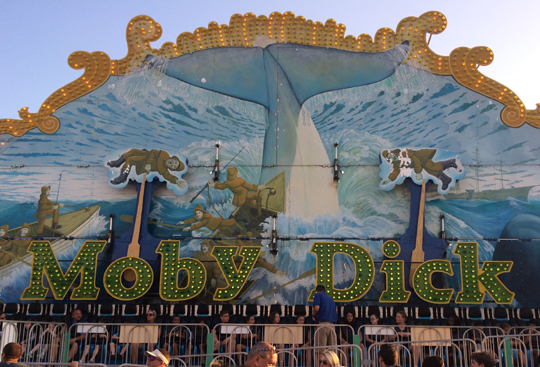 To each their own thrills, be it the humble log flume (Dr. Dana) or the insane 128mph coaster that basically turns your face inside out (Katie). Inspired by my Moby Dick sighting on the
To each their own thrills, be it the humble log flume (Dr. Dana) or the insane 128mph coaster that basically turns your face inside out (Katie). Inspired by my Moby Dick sighting on the 